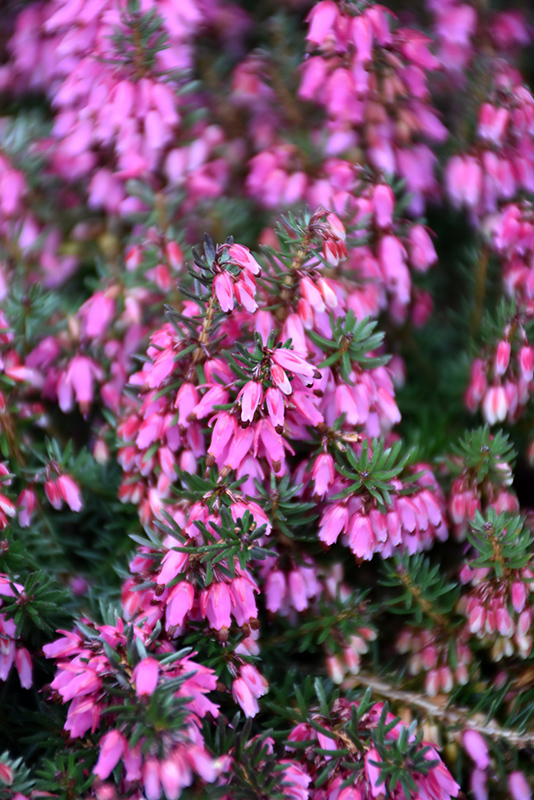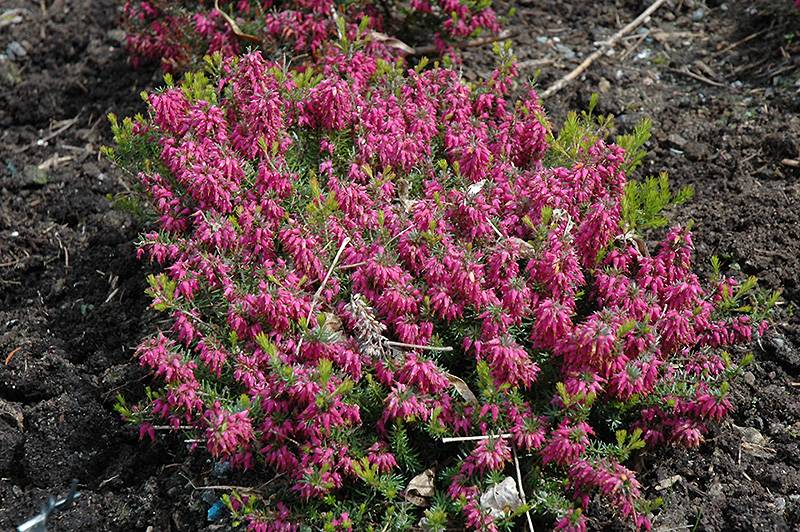Shonnard’s Nursery
Plant Finder Tool
Height: 6 inches
Spread: 15 inches
Sunlight:
![]()
Hardiness Zone: 4b
Other Names: Spring Heath, Snow Heath, Winter Heath
Description:
An excellent groundcover with hot pink tubular flowers in late winter and deep blue-green needle-like foliage, ideal for poor soils, also great for massing in the garden; requires organic highly acidic soil, full sun and absolutely no standing water
Ornamental Features
Tanja Heath is blanketed in stunning spikes of hot pink bell-shaped flowers rising above the foliage from late winter to early spring. It has bluish-green evergreen foliage which emerges light green in spring. The tiny needles remain bluish-green throughout the winter.
Landscape Attributes
Tanja Heath is a multi-stemmed evergreen shrub with a ground-hugging habit of growth. It lends an extremely fine and delicate texture to the landscape composition which should be used to full effect.
This is a relatively low maintenance shrub, and should only be pruned after flowering to avoid removing any of the current season's flowers. It is a good choice for attracting bees to your yard. It has no significant negative characteristics.
Tanja Heath is recommended for the following landscape applications;
- Mass Planting
- General Garden Use
- Groundcover
- Naturalizing And Woodland Gardens
Planting & Growing
Tanja Heath will grow to be only 5 inches tall at maturity, with a spread of 15 inches. It tends to fill out right to the ground and therefore doesn't necessarily require facer plants in front. It grows at a slow rate, and under ideal conditions can be expected to live for approximately 20 years.
This shrub should only be grown in full sunlight. It does best in average to evenly moist conditions, but will not tolerate standing water. It is very fussy about its soil conditions and must have rich, acidic soils to ensure success, and is subject to chlorosis (yellowing) of the foliage in alkaline soils. It is somewhat tolerant of urban pollution. Consider covering it with a thick layer of mulch in winter to protect it in exposed locations or colder microclimates. This is a selected variety of a species not originally from North America.


